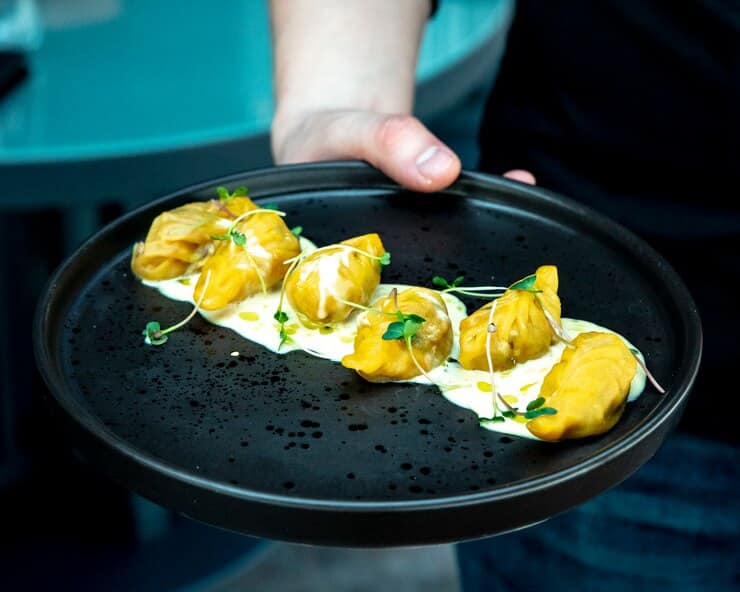Eggs Benedict is a classic brunch dish that consists of poached eggs, Canadian bacon or ham, and hollandaise sauce, all elegantly perched on a toasted English muffin. This dish has captured the hearts of brunch lovers everywhere, but many people shy away from making it at home due to its perceived complexity. However, with a little guidance and the right techniques, you can achieve restaurant-quality Eggs Benedict in your own kitchen. In this comprehensive guide, we will explore the origins of this beloved dish, break down the essential components, and provide you with tips and tricks to ensure your Eggs Benedict turns out perfectly every time.
The History of Eggs Benedict
The origins of Eggs Benedict are a bit murky, with several claims to its invention. One popular story attributes the dish to Delmonico’s Restaurant in New York City in the late 19th century. According to this account, a regular customer named Lemuel Benedict requested a dish of poached eggs, bacon, and hollandaise sauce on buttered toast to cure his hangover. The chef, impressed by the combination, decided to add it to the menu, serving it on an English muffin instead of toast.
Another story credits a different New York City restaurant, the Waldorf-Astoria, where a similar dish was created for a wealthy patron. Regardless of its origins, Eggs Benedict has become a staple in brunch menus across the globe, evolving into various styles and adaptations.
The Essential Components of Eggs Benedict

To make a perfect Eggs Benedict, you need to master several key components:
1. Poached Eggs
Poached eggs are the star of the show in this dish. They should have a runny yolk and tender whites, providing a beautiful contrast to the other components. Here are some tips for poaching eggs successfully:
- Freshness Matters: The fresher the eggs, the better they will hold their shape while poaching. Look for eggs that are as fresh as possible.
- Vinegar Trick: Adding a splash of vinegar to the poaching water can help the egg whites coagulate faster, resulting in a neater poached egg.
- Gentle Simmer: Bring a pot of water to a gentle simmer (not a rolling boil) before adding the eggs. A gentle simmer helps prevent the eggs from breaking apart.
- Swirl Method: Create a gentle whirlpool in the water by stirring it with a spoon before adding the egg. This motion helps the egg white wrap around the yolk, resulting in a more compact shape.
2. Hollandaise Sauce
Hollandaise sauce is the rich, buttery sauce that ties the dish together. It can be intimidating to make, but with practice, you can achieve a velvety sauce that enhances your Eggs Benedict. Here’s how to make it:
- Double Boiler Method: Use a double boiler to gently heat the egg yolks while whisking them. This method prevents the eggs from scrambling.
- Slow and Steady: Slowly drizzle in melted butter while whisking vigorously. This gradual incorporation creates an emulsion, giving the sauce its creamy texture.
- Seasoning: Add lemon juice, salt, and cayenne pepper for flavor. Taste and adjust the seasoning to your liking.
- Keeping it Warm: If you’re making hollandaise ahead of time, keep it warm in a thermos or over a bowl of warm water. If it thickens too much, whisk in a little warm water to thin it out.
3. English Muffins
English muffins provide the perfect base for Eggs Benedict. Their nooks and crannies soak up the yolk and hollandaise beautifully. You can buy pre-made English muffins or make your own if you’re feeling adventurous. Here’s how to prepare them:
- Toasting: Toast the English muffins until golden brown for added texture. A little butter on the cut side enhances the flavor.
- Homemade Option: If you want to make your own, mix flour, yeast, and milk to create a dough, then cook the muffins on a griddle to get that classic texture.
4. Canadian Bacon or Ham
While Canadian bacon is the traditional choice for Eggs Benedict, you can also use ham, prosciutto, or even smoked salmon for a different twist. Here’s how to prepare your meat:
- Cooking: If using Canadian bacon, you can lightly pan-fry it until it’s warmed through and slightly crispy.
- Alternatives: For a unique take, consider using smoked salmon for a seafood twist, or sautéed spinach for a vegetarian option.
The Perfect Assembly

Once you have all your components prepared, it’s time to assemble your Eggs Benedict. Here’s how to do it step by step:
- Prepare Your Workstation: Gather all your components—poached eggs, hollandaise sauce, toasted English muffins, and cooked Canadian bacon.
- Layering: Start by placing the toasted half of the English muffin on a plate. Add a slice of Canadian bacon or your choice of meat on top of the muffin.
- Add the Egg: Gently place the poached egg on top of the bacon. The runny yolk will flow over the meat and muffin, creating a delicious sauce.
- Drizzle with Hollandaise: Generously spoon hollandaise sauce over the poached egg. Make sure to cover the egg fully for that rich, buttery flavor.
- Garnish: For added color and flavor, garnish with chopped fresh herbs like chives or parsley. A sprinkle of paprika or cayenne pepper adds a nice touch as well.
- Serve Immediately: Eggs Benedict is best served right away while everything is warm and fresh.
Tips for Perfecting Your Eggs Benedict
To ensure restaurant-quality results, consider the following tips:
- Practice Your Poaching Skills: Poaching eggs can take some practice, so don’t be discouraged if they don’t turn out perfectly the first time. Keep trying!
- Prep Ahead: To streamline the process, prep your hollandaise sauce and cook the bacon in advance. This way, you can focus on poaching the eggs just before serving.
- Temperature Control: Keep your poached eggs warm by placing them in a bowl of warm water until you’re ready to assemble.
- Experiment with Flavors: Don’t hesitate to try different toppings or variations of hollandaise. You can add flavors like Dijon mustard or herbs for a unique twist.
- Use Quality Ingredients: The quality of your ingredients will greatly impact the final dish. Use farm-fresh eggs, good quality Canadian bacon, and real butter for the best flavor.
- Presentation Matters: Take the time to present your Eggs Benedict beautifully. A well-plated dish looks more appetizing and can elevate your brunch experience.
Variations of Eggs Benedict

While the classic Eggs Benedict is delicious on its own, there are numerous variations that you can explore:
1. Eggs Florentine
This variation replaces the meat with sautéed spinach, making it a lighter, vegetarian-friendly option. The sautéed spinach adds a fresh flavor and pairs beautifully with the creamy hollandaise sauce.
2. Eggs Royale
In this version, smoked salmon replaces the Canadian bacon, offering a luxurious twist. The combination of the rich egg, buttery hollandaise, and smoky salmon creates a delightful flavor profile.
3. Crab Cake Benedict
For a coastal flair, use crab cakes instead of the traditional meat. The sweetness of the crab pairs perfectly with the richness of the egg and hollandaise.
4. Southwestern Eggs Benedict
Add a spicy twist by using chorizo and avocado. Top with a chipotle hollandaise sauce for a flavorful and unique brunch option.
5. Breakfast Burrito Benedict
Combine your favorite breakfast burrito ingredients like scrambled eggs, cheese, and salsa, and serve with hollandaise on a tortilla instead of an English muffin.
Also Read : Delicious Cincinnati Chili Dishes : Essential Recipes And Expert Tips
Conclusion
Eggs Benedict is a timeless dish that brings together rich flavors, textures, and a touch of sophistication. With the right techniques and ingredients, you can create restaurant-quality results in the comfort of your own kitchen. From mastering the art of poaching eggs to perfecting your hollandaise sauce, this guide provides you with the knowledge and confidence to tackle this classic brunch favorite. Whether you’re impressing guests at a Sunday brunch or treating yourself to a delightful breakfast, Eggs Benedict is sure to satisfy.
FAQs
1. Can I make hollandaise sauce in advance?
While it’s best served fresh, you can make hollandaise ahead of time. Store it in a thermos or over warm water to keep it at serving temperature.
2. How do I store leftover Eggs Benedict?
Eggs Benedict is best enjoyed fresh, but if you have leftovers, store the components separately in the fridge. Reheat the bacon and eggs before reassembling.
3. Can I use other meats besides Canadian bacon?
Absolutely! Feel free to use ham, prosciutto, or even smoked salmon as a delicious alternative.
4. What if I can’t poach eggs?
If poaching proves challenging, you can fry or scramble the eggs instead. The dish will still be delicious!
5. Can I make Eggs Benedict vegetarian?
Yes! Use sautéed spinach or roasted vegetables in place of meat and enjoy the same delicious flavors.
6. How do I know when my poached eggs are done?
The eggs should be cooked until the whites are set but the yolks remain runny. This usually takes about 3-4 minutes.
7. Can I use a microwave to make hollandaise?
While it’s possible to make hollandaise in the microwave, traditional methods yield better results. If you’re pressed for time, consider using a blender hollandaise recipe.








Leave A Comment